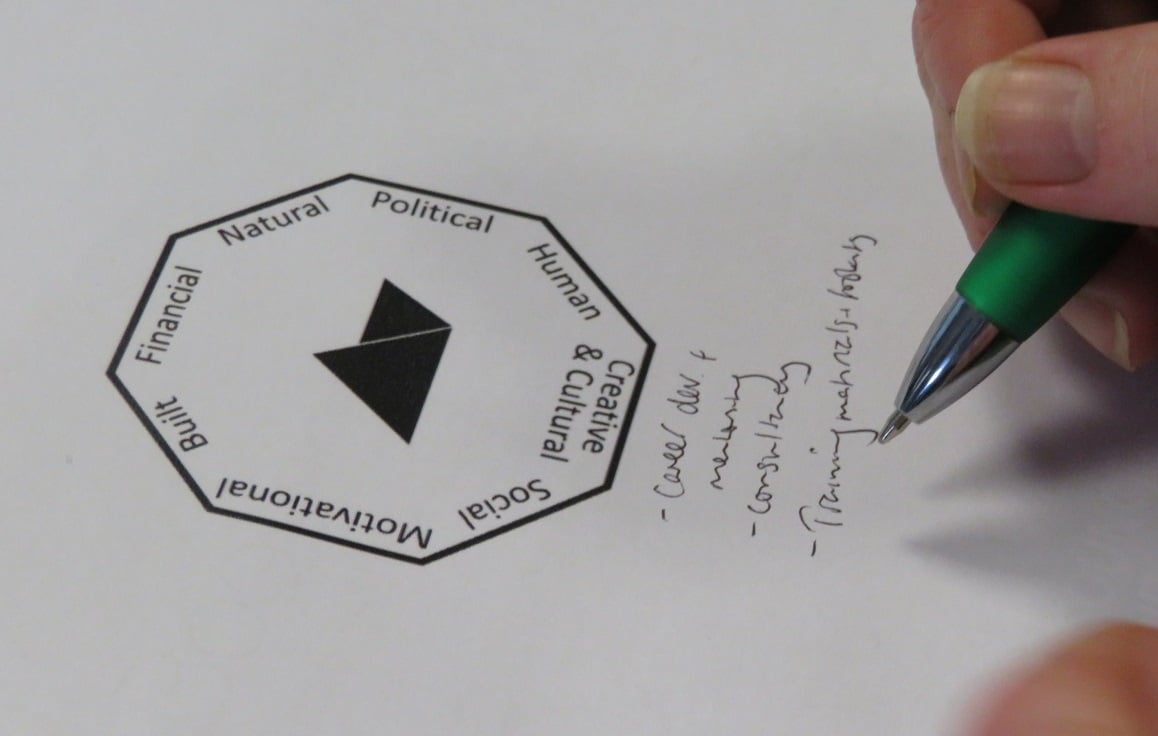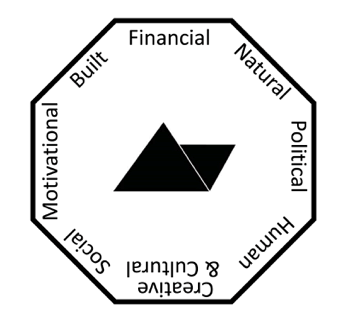
Taking advantage of your assets
Melissa Wong introduces a simple framework to help arts organisations identify their strengths, and build on them to boost their resilience.
With ‘resilience’ the buzzword of the moment, there is an increasing number of programmes and resources to help arts and cultural organisations transform their business models. These include developing new capabilities around fundraising, sponsorship, crowdfunding, loan finance, trading and other income streams.
That our participants see their organisation’s assets as worthy of stewardship and investment suggests that there is untapped potential
No doubt all of these options have the potential to create transformative change in the right organisation under the right circumstances, but what they also have in common is their focus on what arts and cultural organisations are not doing, instead of what they are doing.
The Boosting Resilience programme offers a new way of thinking about resilience by taking an asset-based approach. Through its emphasis on creative assets and intellectual property, our programme helps arts and cultural organisations recognise what they’re already doing well and how to build on these strengths to make themselves more resilient.
Creative asset octagon
An exercise from our residential in Birmingham (the first of three, which provide the framework for a wider programme of learning and development activities) is illustrative of this approach. Using Mission Models Money’s taxonomy of assets held by cultural and creative practitioners and organisations, we developed a creative asset octagon, with each side representing one of the eight categories in this taxonomy:
- Financial assets – cash and investments
- Built assets – buildings, facilities and equipment
- Motivational assets – powerful visions, missions and values
- Social assets – networks and collaborators
- Creative and cultural assets – intellectual property and a strong brand
- Human assets – people’s knowledge and skills
- Natural assets – land, energy and resources
- Political assets – power and influence

Using these categories as a guide, participants reflected on their organisation’s assets to create a mind map of them around the octagon. In the evaluation at the end of the residential, participants reported that this exercise helped them recognise their assets and gave them confidence that their organisation does indeed have assets to develop.
Notably, this taxonomy describes its categories as assets rather than simply resources. This encourages a mindset shift by highlighting an organisation’s strengths and acknowledging the value they hold, before even thinking about how they can be drawn upon to deliver programmes.
Participants found the octagon to be a simple and effective tool for identifying and visualising their organisation’s assets against a clear framework. The exercise also helped them to think differently and expand their understanding of what an asset is – not just tangible items such as buildings and equipment, but also intangible strengths and advantages, such as a strong network of partners and a passionate belief in what they do.
The octagon was equally beneficial for organisations of all sizes. Smaller organisations used to working creatively and resourcefully found it useful to put these intangible assets in writing. Their wide-ranging lists around the octagon revealed that they have more to offer than their size would suggest. Larger organisations realised they were sitting on assets that they had long taken for granted, such as their buildings.
Organisations of all sizes expanded their conception of the different asset categories. For example, thinking of networks not only in terms of formal partnerships and consortia but also their informal networks of freelancers and commissioned artists.
After mapping these assets, participants discussed their octagons in small groups. Through sharing their mind maps and getting feedback from their peers, participants gained experience of articulating their assets and receiving external affirmation of their value, emboldening them and giving them confidence in what their organisation has to offer. This exercise also gave them the opportunity to learn about other assets, which helped them to further flesh out their understanding of their own organisation.
At the end of this exercise, participants received an inventory of assets across all participating organisations. We created this through coding and analysing their applications on to the Boosting Resilience programme, where they had been asked to identify their organisation’s main assets. This inventory provided an important reminder of the strengths, talents and accomplishments of the individuals and organisations within our cohort and across the wider sector.
Renewed commitment
Upon leaving the residential, participants reported that they would spend more time developing their understanding of their organisation’s assets with their staff and boards. They also expressed a renewed commitment to protecting, developing and scaling up their assets over the long term, making their robust management a central concern within their ongoing business model.
That our participants see their organisation’s assets as worthy of stewardship and investment suggests that there is untapped potential, and that boosting resilience can begin by looking within rather than by developing new capabilities relating to different funding streams or business models. In time, as our cohort begins to mobilise their assets, they may find that they do indeed need to transform their business models in order to make the most of them. But by taking their assets as the starting point, they will be building these capabilities on a bedrock of strength.
At the heart of an asset-based approach to resilience is the best of what arts and cultural organisations have to offer, whether that’s their creative output, expertise, knowledge, networks or their passion and commitment to their work.
These strengths have endured and adapted to a whole variety of changes in the external environment over the years, exhibiting the very characteristics of resilience that organisations are looking to develop. If arts and cultural organisations wish to become more resilient, there’s no better place to start than with their assets.
Melissa Wong is a Research Fellow in the Centre for Creativity in Professional Practice at Cass Business School.
www.cass.city.ac.uk/faculties-and-research/centres/creativity
This article, contributed and sponsored by Boosting Resilience, is part of a series on making the arts and cultural sector more resilient.
Join the Discussion
You must be logged in to post a comment.